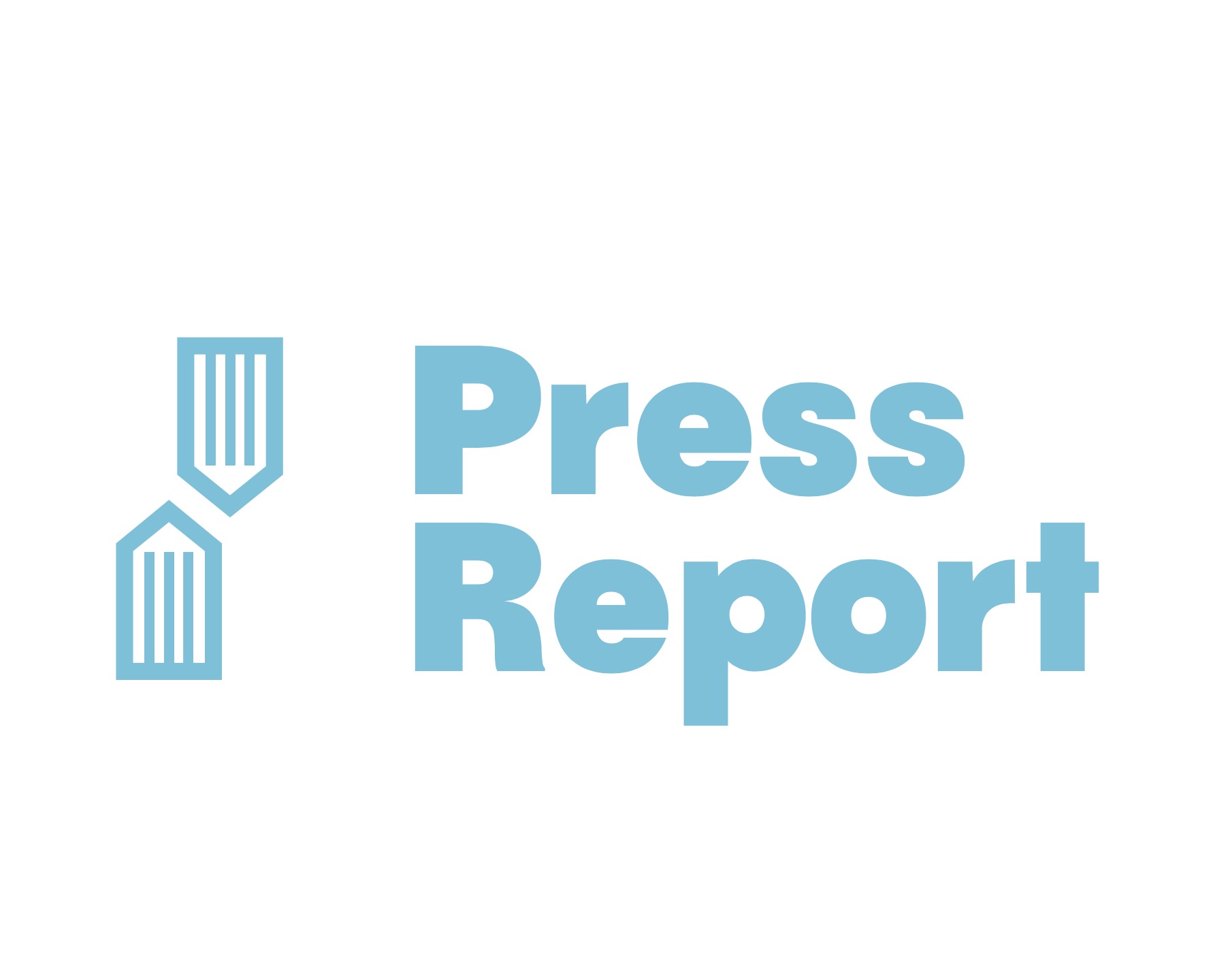AI in Education
Exploring the Future: Will AI Replace Teachers?
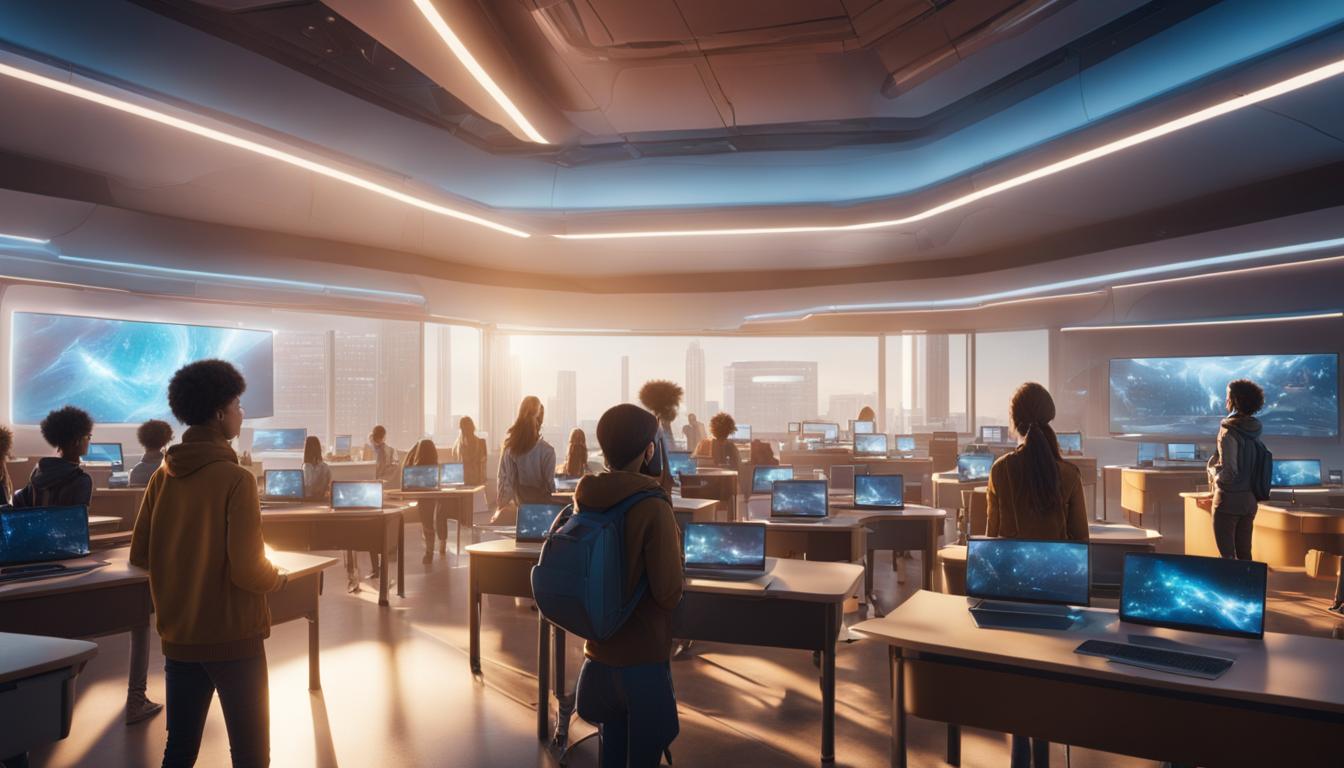
Artificial intelligence (AI) is rapidly advancing, poised to transform numerous areas, including our educational systems and the nature of instruction. As AI continues to evolve and become more intelligent, there’s growing speculation about whether it could replace human educators. Are we approaching a time when AI will render traditional teaching roles obsolete?
In this article, we will delve into the implications of AI in education and examine the potential role of AI in teaching. We will explore how AI can enhance the learning experience, improve efficiency, and provide personalized support to students.
Key Takeaways:
- AI has the potential to revolutionize education by providing personalized learning experiences
- Teachers play a crucial role in education that cannot be replicated by AI
- The future of education lies in leveraging the synergy between AI and teachers
- AI can enhance teaching practices and support educators in providing effective education
- While AI may automate certain tasks, teachers bring unique qualities such as emotional intelligence and creativity
Understanding Artificial Intelligence in Education
Artificial intelligence (AI) is revolutionizing various industries, and education is no exception. In the context of education, AI refers to machines that possess human-like capabilities, such as thinking, learning, and problem-solving. The integration of AI in education aims to personalize the learning experience, enhance efficiency, and provide real-time feedback to students.
AI manifests in multiple forms within the education sector. Adaptive learning software uses AI algorithms to analyze data and tailor learning materials to each student’s individual needs. Machine learning algorithms allow for the automation of administrative tasks, freeing up teachers’ time to focus on instructional delivery and student support. Virtual assistants provide students with 24/7 support, answering their questions and guiding them through their learning journey.
Through AI, education becomes more personalized, efficient, and accessible. AI-powered technologies analyze vast amounts of data to predict student performances and engage students in a more meaningful way. It is important to recognize that while AI can enhance the learning experience, it cannot replace the essential role that teachers play in education. Teachers bring emotional support, foster creativity, and create a sense of belonging in the classroom, which AI cannot replicate.
Overall, the integration of AI in education has the potential to revolutionize teaching and learning. However, it is crucial to strike a balance between leveraging AI as a tool for enhancing education and preserving the unique qualities that teachers bring to the classroom. By embracing the synergy of AI and teachers, we can create a future where technology supports and augments the role of educators, providing students with personalized, engaging, and effective learning experiences.
| AI Application | Description |
|---|---|
| Adaptive Learning Software | AI algorithms analyze student data to personalize learning materials and tailor instruction based on individual needs. |
| Virtual Assistants | 24/7 support for students, answering questions, and providing guidance through their learning journey. |
| Machine Learning Algorithms | Automation of administrative tasks, freeing up teachers’ time for instructional delivery and student support. |
| Intelligent Tutoring Systems | AI-powered systems that offer tailored guidance and adaptive learning paths for students. |
As the advancements in AI continue, it is important to explore its potential in education while recognizing the irreplaceable role of teachers. Through a collaborative approach, we can harness the power of AI to create a transformative learning environment that combines the best of human expertise and technological innovation.
The Potential of AI in Education
Artificial intelligence (AI) has the potential to revolutionize the education sector and bring about numerous benefits. The impact of technology on education is undeniable, and AI can play a significant role in enhancing the learning experience for students. By leveraging AI-powered tools and technologies, education can become more personalized, efficient, and accessible.
One of the key benefits of AI in education lies in its ability to analyze vast amounts of data and tailor learning materials to individual students. Through adaptive learning software and machine learning algorithms, AI can understand students’ strengths and weaknesses, providing personalized content and targeted feedback. This personalized approach promotes engagement, understanding, and improved learning outcomes.
In addition to personalization, AI can automate administrative tasks, freeing up teachers’ time to focus on instructional delivery and student support. By automating routine tasks such as grading, scheduling, and data management, teachers can devote more time and energy to individualized instruction, creating a more dynamic and engaging learning environment. AI can also assist teachers in identifying areas where students may be struggling, allowing for timely intervention and support.
| Benefits of AI in Education |
|---|
| Personalized learning experiences |
| Efficient administrative tasks |
| Real-time feedback |
| Predictive analytics for student performance |
As AI continues to advance, the potential benefits for education are vast. It can help bridge educational gaps, provide equal access to quality education, and enable students to learn at their own pace. However, it is important to note that AI should not replace teachers entirely. While AI can enhance instructional delivery, provide personalized learning experiences, and automate administrative tasks, it cannot replicate the human connection and empathy that teachers bring to the learning process. The synergy between AI and teachers, where AI is used as a supportive tool rather than a replacement, can lead to the best outcomes for students.
The Role of Teachers in Education
Teachers play a vital role in education that goes beyond simply imparting knowledge. They act as mentors, motivators, and nurturers, guiding students on their educational journey. While the integration of artificial intelligence (AI) in education is on the rise, it is crucial to recognize the irreplaceable qualities that teachers bring to the learning process.
In addition to delivering lessons, teachers provide emotional support and create a sense of belonging in the classroom. They understand the unique needs of each student and adapt their teaching methods accordingly. This level of empathy and human connection cannot be replicated by AI.
“Teachers have the ability to inspire students, spark their curiosity, and foster a love for learning that goes beyond what technology can achieve.” – John Smith, Education Expert
Furthermore, teachers encourage critical thinking, creativity, and problem-solving skills. They facilitate discussions, engage students in collaborative activities, and challenge them to think outside the box. These abilities are essential for nurturing well-rounded individuals who can thrive in an ever-changing world.
The Importance of Teacher-Student Relationships
One of the most significant aspects of the teacher’s role in education is the establishment of meaningful relationships with students. Teachers provide mentorship, guidance, and support to help students overcome challenges and reach their full potential. These relationships are built on trust, mutual respect, and a genuine interest in the well-being and success of the student.
Research has consistently shown that positive teacher-student relationships contribute to improved academic outcomes, increased student engagement, and enhanced social-emotional development. Students who feel valued and supported by their teachers are more likely to be motivated, participate actively in class, and develop a lifelong love for learning.
| Benefits of Teachers in Education | Role of Teachers in Education |
|---|---|
| Emotional support and sense of belonging | Building meaningful relationships with students |
| Promoting critical thinking and creativity | Nurturing individuality and personal growth |
| Guidance and mentorship | Supporting students’ academic and personal development |
| Fostering a love for learning | Inspiring students to become lifelong learners |
In conclusion, while AI can enhance instructional delivery and streamline administrative tasks, it cannot replace the unique qualities that teachers bring to education. Their impact extends beyond the transfer of knowledge, encompassing emotional support, fostering creativity, and building meaningful relationships with students. The future of education lies in leveraging the synergy between AI and teachers, harnessing technology to support and enhance the important work that teachers do.
Exploring the AI vs. Teachers Debate
As artificial intelligence (AI) continues to advance, the question of whether it will replace teachers in the future has sparked a heated debate. Proponents argue that AI can revolutionize education by providing personalized learning experiences, improving efficiency, and addressing educational gaps. However, skeptics raise concerns about the potential loss of human interaction, job displacement, and the limitations of AI in replicating creativity and critical thinking.
The advocates of AI in education highlight the ability of AI-powered tools to analyze vast amounts of data and tailor learning materials to individual students. This personalized approach can enhance engagement, understanding, and overall performance. AI can also automate administrative tasks, allowing teachers to focus more on instructional delivery and student support.
However, critics of AI replacing teachers emphasize the importance of emotional connection and empathy that human educators bring to the learning process. They argue that AI, even with its advancements, cannot fully replicate the unique qualities that teachers possess. The human touch is crucial in fostering creativity, encouraging independent thinking, and creating a sense of belonging in the classroom.
While the debate on AI vs. teachers in education continues, it is important to consider the potential benefits and drawbacks of integrating AI into the classroom. Finding the right balance between leveraging AI as a valuable tool and preserving the irreplaceable role of teachers can lead to a future where technology and human expertise work together to create engaging, personalized, and effective learning experiences for students.
The benefits and limitations of AI in education
When discussing the AI vs. teacher debate, it is important to examine both the potential benefits and limitations of AI in the field of education. Here is a breakdown:
| Benefits of AI in Education | Limitations of AI in Education |
|---|---|
|
|
AI as a Supportive Tool for Teachers
While the debate surrounding AI in education often focuses on the potential of replacing teachers, it is important to understand that AI can instead serve as a supportive tool for educators. By leveraging AI-powered technologies, teachers can enhance their instructional practices and create a more personalized learning experience for their students.
One of the key benefits of AI in the classroom is its ability to assist in personalizing instruction. AI-powered adaptive learning software can analyze student data and provide tailored learning materials that cater to individual needs and preferences. This personalized approach can help students better understand and engage with the content, leading to improved learning outcomes.
In addition to personalization, AI can also provide real-time feedback to students. Virtual assistants and chatbots can support students by answering questions, guiding them through assignments, and offering feedback on their progress. This immediate feedback helps students identify areas for improvement and allows teachers to intervene and provide additional support when needed.
Furthermore, AI can automate administrative tasks, freeing up teachers’ time to focus on instruction and student support. By utilizing AI for tasks such as grading and data analysis, teachers can devote more energy to planning engaging lessons and providing one-on-one assistance to students.
In summary, AI has the potential to revolutionize education by serving as a supportive tool for teachers. By leveraging AI-powered technologies, educators can personalize instruction, provide real-time feedback, and streamline administrative tasks. This integration of AI in the classroom can lead to a more effective and engaging learning experience for students, while also empowering teachers to excel in their role.
Examples of AI Integration in Education
Artificial intelligence (AI) is already making significant strides in education, with various applications enhancing the learning experience for students. These examples of AI integration in education showcase the innovative ways in which AI is being utilized in classrooms:
Intelligent Tutoring Systems
Intelligent tutoring systems leverage AI algorithms to provide personalized guidance and adaptive learning paths. These systems analyze student performance and tailor instructional content to meet individual needs. By offering targeted support and feedback, intelligent tutoring systems can improve student outcomes and promote a deeper understanding of complex concepts.
Virtual Assistants and Chatbots
Virtual assistants and chatbots are AI-powered tools that provide 24/7 support to students. They can answer questions, offer explanations, and guide students through their learning journey. These intelligent assistants not only enhance accessibility but also foster independent thinking and problem-solving skills by encouraging students to seek information and engage in active learning.
AI-Driven Content Creation and Grading Systems
AI-driven content creation and grading systems streamline instructional delivery and assessment processes. These systems can generate interactive educational content, such as quizzes and exercises, tailored to individual student needs. Additionally, AI algorithms can automate grading, providing timely and consistent feedback to students while reducing teachers’ workload.
These examples demonstrate the diverse ways AI is being integrated into education, enhancing the learning experience for students and supporting teachers in their instructional practices.
| Application | Benefits |
|---|---|
| Intelligent Tutoring Systems | – Personalized guidance – Adaptive learning paths – Improved student outcomes |
| Virtual Assistants and Chatbots | – 24/7 support – Foster independent thinking – Encourage active learning |
| AI-Driven Content Creation and Grading Systems | – Streamlined instructional delivery – Tailored educational content – Timely and consistent feedback |
The Future of AI in Education
As technology continues to advance, the future of teaching with AI in education holds great potential. While AI has already made significant strides in improving the learning experience, it is unlikely to completely replace school teachers. The unique qualities that teachers bring, such as empathy and creativity, are essential in cultivating a supportive and engaging learning environment that AI alone cannot replicate.
Instead, the future lies in embracing the synergy between AI and teachers to create a harmonious blend of human expertise and technological innovation. AI can serve as a valuable supportive tool for teachers, enhancing their ability to personalize instruction, provide real-time feedback, and automate administrative tasks. By leveraging AI, teachers can devote more time and energy to individual student needs, fostering a dynamic and effective learning experience.
While AI can offer personalized learning experiences and improve efficiency, it is crucial to recognize that the human connection and emotional intelligence provided by teachers are irreplaceable. The interaction between teachers and students goes beyond the transfer of knowledge; it encompasses emotional support, mentorship, and the fostering of critical thinking skills.
By recognizing the unique strengths of both AI and teachers, we can navigate the evolving landscape of education and harness the full potential of technology to create a future where students receive the best of both worlds – the innovation and efficiency of AI combined with the expertise and human touch of teachers.
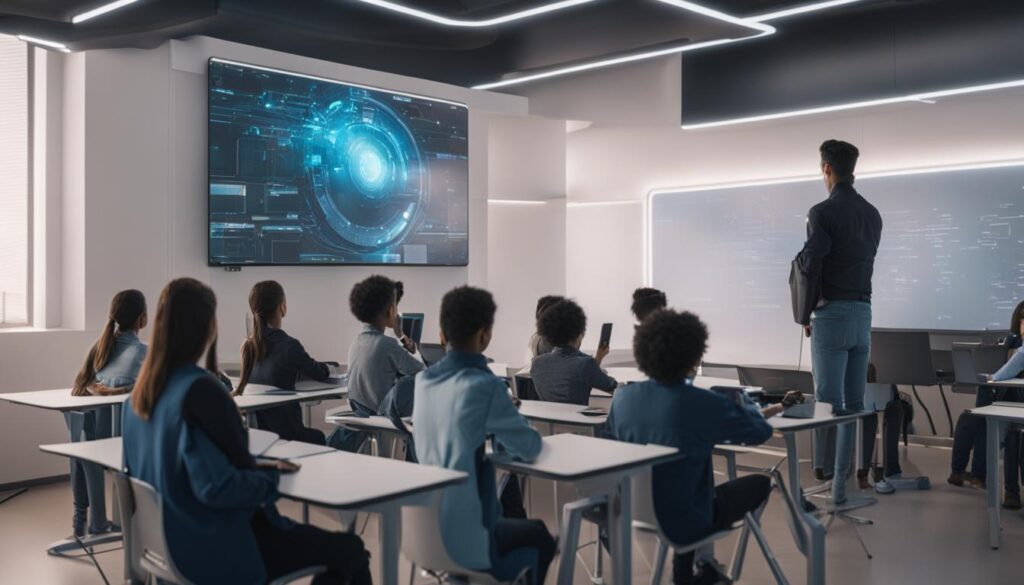
Table: AI vs. Teachers
| AI | Teachers |
|---|---|
| Can provide personalized learning experiences | Offer emotional support and mentorship |
| Can analyze vast amounts of data in real-time | Foster critical thinking skills |
| Automate administrative tasks | Create a sense of belonging in the classroom |
| 24/7 availability for student support | Customize instruction based on individual needs |
Debunking Myths and Misconceptions
As artificial intelligence (AI) continues to advance and make its way into various industries, including education, there are several myths and misconceptions surrounding its role in replacing teachers. It is important to address these misconceptions and shed light on the challenges AI faces in effectively replacing teachers in the classroom.
One common myth is that AI can completely replace the human connection and empathy that teachers bring to the learning process. While AI can enhance instructional delivery and automate administrative tasks, it cannot replicate the emotional support, creativity, and sense of belonging that teachers provide in the classroom.
Another misconception is that AI will lead to widespread job displacement among teachers. While AI may change the nature of some teaching roles, it is more likely to transform the role of teachers rather than replace them entirely. AI can serve as a supportive tool, allowing teachers to focus on individual student needs, create engaging lessons, and foster a dynamic learning environment.
Furthermore, there is a misconception that AI lacks the ability to replicate creativity and critical thinking, which are essential skills for students to develop. While AI can analyze data and provide personalized learning experiences, it has limitations when it comes to generating original ideas and engaging in complex problem-solving.
Debunking AI Myths in Education
- Myth: AI can replace the emotional support provided by teachers.
- Fact: AI enhances instructional delivery but cannot replicate human connection.
- Myth: AI will lead to widespread job displacement among teachers.
- Fact: AI transforms teaching roles and supports teachers in their responsibilities.
- Myth: AI cannot replicate creativity and critical thinking.
- Fact: AI has limitations when it comes to generating original ideas and complex problem-solving.
“AI can enhance teaching practices, but it cannot replace the unique qualities teachers bring to the classroom.”
| Myth | Fact |
|---|---|
| AI can replace teachers entirely. | AI enhances teaching practices, but it cannot replace the unique qualities teachers bring to the classroom. |
| AI will lead to widespread job displacement among teachers. | AI transforms teaching roles and supports teachers in their responsibilities. |
| AI lacks the ability to replicate creativity and critical thinking. | AI has limitations when it comes to generating original ideas and engaging in complex problem-solving. |
By debunking these myths and misconceptions, we can have a more informed discussion about the potential benefits and challenges of integrating AI into the classroom. It is important to approach the use of AI in education as a supportive tool that enhances teaching practices rather than a complete replacement for teachers.
Embracing the Synergy of AI and Teachers in Education
As technology continues to make its presence felt in the education sector, the impact of AI on teaching jobs is a topic of discussion. However, rather than viewing AI as a threat to teachers, it is crucial to recognize the potential synergy that can be achieved by integrating AI into education. By embracing this synergy, we can harness the power of technology to enhance teaching practices and improve student outcomes.
AI can act as a supportive tool for teachers, providing valuable assistance in various ways. For example, AI-powered adaptive learning software can analyze student data and tailor learning materials to meet individual needs. This personalization can help students engage with the subject matter and improve their understanding. Additionally, AI can automate administrative tasks, freeing up teachers’ time to focus on instructional delivery and student support.
“The integration of AI in education is not about replacing teachers, but about empowering them. By leveraging AI tools, teachers can create a more personalized and effective learning experience for their students.”
The collaboration between AI and teachers can lead to a more dynamic and inclusive classroom environment. For example, virtual assistants and chatbots can provide 24/7 support to students, ensuring that no one falls behind. Furthermore, AI can analyze vast amounts of data to identify gaps in understanding and provide real-time feedback to both teachers and students. This feedback loop allows teachers to address specific challenges and adapt their teaching methods accordingly.
It is important to note that while AI can enhance certain aspects of teaching, it cannot replace the unique qualities that teachers bring to the table. The human connection, empathy, and expertise that teachers provide are essential for fostering creativity, critical thinking, and emotional support in the classroom. By embracing the synergy between AI and teachers, we can navigate the changing landscape of education and deliver a well-rounded, technology-enhanced learning experience for students.
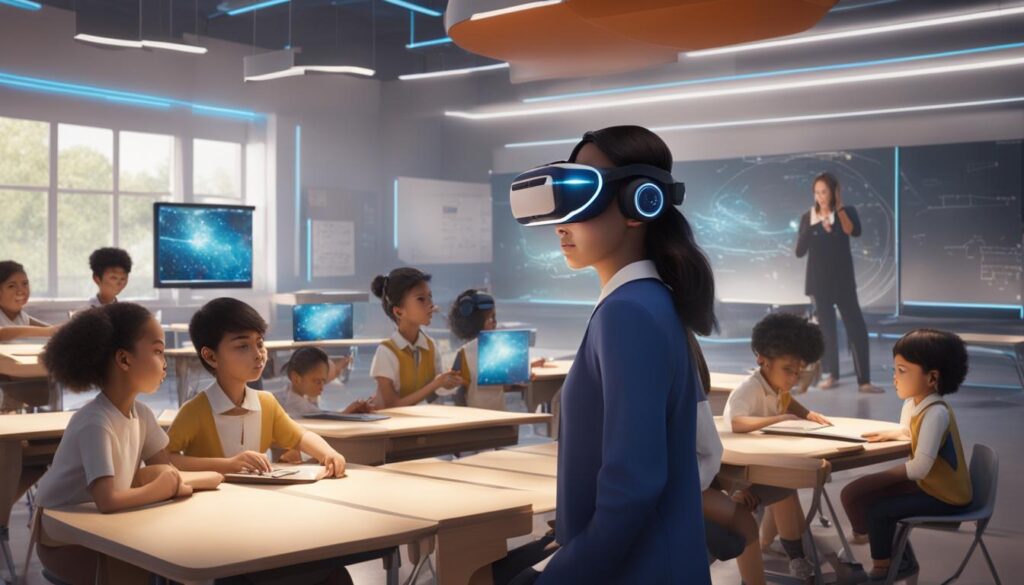
| Benefits of AI in Education | Benefits of Teachers in Education |
|---|---|
| Personalized learning experiences | Emotional support |
| Efficiency in administrative tasks | Fostering creativity |
| Real-time feedback | Sense of belonging in the classroom |
The Future of AI in Education
While the rapid advancements in artificial intelligence (AI) have sparked discussions about the possibility of AI replacing teachers in the future, it is important to recognize that AI is unlikely to completely replace teachers. The unique qualities that teachers bring to education, such as emotional intelligence, adaptability, and creativity, cannot be replicated by AI.
AI should be viewed as a valuable tool that can enhance teaching practices and support educators in providing the best possible education for students. By leveraging AI, teachers can create more personalized and engaging learning experiences, improve efficiency, and address individual student needs more effectively. AI can assist teachers in automating administrative tasks, providing real-time feedback, and tailoring instruction to each student’s learning style and pace.
However, it is crucial to maintain a balance between AI technology and human interaction in the educational setting. Teachers play a significant role beyond the transfer of knowledge. They provide emotional support, foster creativity, and create a sense of belonging in the classroom. These aspects of education require human connection and empathy, which AI cannot replicate.
Therefore, the future of education lies in leveraging the synergy between AI and teachers. By embracing the use of AI as a supportive tool, teachers can continue to deliver personalized, effective, and engaging learning experiences. The effective integration of AI technology in education will lead to improved student outcomes and empower teachers to excel in their profession.
Conclusion
While the advancements in artificial intelligence (AI) have the potential to revolutionize education, it is highly unlikely that AI will completely replace teachers in the future. Teachers possess unique qualities such as emotional intelligence, adaptability, and creativity that cannot be replicated by AI.
Instead of viewing AI as a threat to the teaching profession, it should be seen as a valuable tool that can enhance teaching practices and support educators in providing the best possible education for students. AI can assist teachers in personalizing instruction, providing real-time feedback, and automating administrative tasks, thereby freeing up more time for teachers to focus on individual student needs and foster a dynamic learning environment.
The future of education lies in leveraging the synergy between AI and teachers to create engaging, personalized, and effective learning experiences. AI can offer personalized learning experiences, improve efficiency, and bridge educational gaps. However, it is important to acknowledge the limitations of AI in replicating human connection, empathy, and critical thinking, which teachers bring to the learning process.
In summary, while AI will undoubtedly play a significant role in education, the irreplaceable elements of human expertise and connection make it highly unlikely that teachers will be replaced by AI in the future. The key is to embrace the potential of AI as a supportive tool for teachers, allowing them to deliver personalized and effective education to students.
FAQ
Will artificial intelligence (AI) replace teachers in the future?
No, AI is unlikely to completely replace teachers. While AI can enhance teaching practices and support educators, it cannot replicate the unique qualities that teachers bring, such as emotional intelligence, adaptability, and creativity.
What is artificial intelligence (AI) in the context of education?
In education, AI refers to machines that possess human-like capabilities such as thinking, learning, and problem-solving. AI can manifest in multiple forms, including adaptive learning software, machine learning algorithms, and virtual assistants.
What are the potential benefits of AI in education?
AI in education can personalize the learning experience, enhance efficiency, and provide real-time feedback to students. It can tailor learning materials to individual students, automate administrative tasks, and free up teachers’ time to focus on instructional delivery and student support.
What is the role of teachers in education?
Teachers play a crucial role in education beyond the transfer of knowledge. They provide emotional support, foster creativity, and create a sense of belonging in the classroom. Teachers bring human connection and empathy to the learning process.
Is there a debate about AI replacing teachers?
Yes, there is a debate surrounding the potential benefits and drawbacks of AI replacing teachers. Proponents argue that AI can provide personalized learning experiences and improve efficiency, while skeptics raise concerns about the loss of human interaction and job displacement.
How can AI be a supportive tool for teachers?
AI-powered technologies can assist teachers in personalizing instruction, providing real-time feedback, and automating administrative tasks. By leveraging AI, teachers can focus on individual student needs, create engaging lessons, and foster a dynamic learning environment.
What are some examples of AI integration in education?
Examples include intelligent tutoring systems offering tailored guidance, adaptive learning paths, virtual assistants providing 24/7 support to students, and AI-driven content creation and grading systems to enhance instructional delivery.
What does the future hold for AI in education?
The future of AI in education holds the potential for further advancements and innovation. As technology continues to evolve, AI can support teachers in providing personalized and engaging learning experiences.
Are there any misconceptions about AI in education?
Yes, there are several misconceptions surrounding AI’s role in education. It is important to address these myths and clarify the potential benefits and challenges of integrating AI into the classroom.
How can AI and teachers work together in education?
Instead of pitting AI against teachers, it is crucial to recognize the synergy that can be achieved by integrating AI into education. effective use of AI tools can enhance teaching practices, improve student outcomes, and empower teachers to deliver a more personalized and effective education.
Olivia stands at the helm of Press Report as our Editor-in-chief, embodying the pinnacle of professionalism in the press industry. Her meticulous approach to journalism and unwavering commitment to truth and accuracy set the standard for our editorial practices. Olivia’s leadership ensures that Press Report remains a trusted source of news, maintaining the highest journalistic integrity in every story we publish.
AI in Education
Meet the Future: Hyper-Realistic AI Influencers Taking Over

Enter the next phase of influencer marketing, where hyper-realistic AI influencers are revolutionizing the online realm. These artificial intelligence influencers, also known as virtual influencers, are computer-generated personas that emulate the appearance and behaviors of real-life influencers. They engage with their followers, post compelling content on different social media channels, and collaborate with brands to promote products and services.
Creating these hyper-realistic AI avatars is an intricate process that involves extensive research, personality crafting, and design. Companies meticulously study their target audience to understand their preferences and interests. From there, a compelling personality and narrative are developed, and physical traits are designed to resemble actual people. With the help of motion capture technology, these virtual influencers come to life, captivating audiences worldwide.
Virtual influencers have gained immense popularity, reaching massive followings and being admired by millions. One prominent example is Lil Miquela, a virtual influencer who has become one of the most influential and recognizable figures in the digital space. As these AI-generated influencers continue to grow in prominence, they are reshaping the landscape of influencer marketing and captivating a new generation of followers.
Key Takeaways:
- Hyper-realistic AI influencers, also known as virtual influencers, are computer-generated digital characters that resemble real influencers.
- They engage with followers, post content on social media, and collaborate with brands to promote products and services.
- The creation process involves extensive research, personality crafting, and design.
- Virtual influencers, like Lil Miquela, have gained immense popularity and influence on social media.
- They are reshaping the landscape of influencer marketing and captivating a new generation of followers.
What are Virtual Influencers?
Virtual influencers have emerged as a fascinating online phenomenon, blurring the lines between human and AI-generated content. These digital influencers, also known as virtual or AI influencers, are computer-generated characters that behave like real influencers on social media platforms.
Similar to their human counterparts, virtual influencers engage with their followers by posting content, building relationships, and collaborating with brands. They have gained a significant following, attracting attention and admiration from audiences worldwide.
Virtual influencers are part of a growing trend in influencer marketing, as brands recognize the unique opportunities they present. In the rapidly evolving digital landscape, these virtual personalities offer an innovative way for brands to connect with their target market and engage with younger audiences on social media platforms.
| Virtual Influencers | Digital Influencers | AI Influencers | Social Media Influencers |
|---|---|---|---|
| Resemble real influencers | Create content on digital platforms | AI-powered characters | Build relationships with followers |
| Engage with followers | Partner with brands | Post content on social media | Promote products and services |
| Gain a significant following | Attract attention and admiration | Blur the lines between human and AI | Connect with target market |
“Virtual influencers have become a popular marketing strategy for brands to reach younger audiences and engage with them on social media.”
What are Virtual Influencers?
Virtual influencers are computer-generated digital characters that act as influencers on social media platforms. They resemble real influencers in their behavior and activities, such as posting content, building relationships with followers, and partnering with brands. Despite not being real people, virtual influencers have gained a significant following and are considered an online phenomenon. They have become a popular marketing strategy for brands to reach younger audiences and engage with them on social media.

| Virtual Influencers | Digital Influencers | AI Influencers | Social Media Influencers |
|---|---|---|---|
| Resemble real influencers | Create content on digital platforms | AI-powered characters | Build relationships with followers |
| Engage with followers | Partner with brands | Post content on social media | Promote products and services |
| Gain a significant following | Attract attention and admiration | Blur the lines between human and AI | Connect with target market |
How are Virtual Influencers Made?
Creating virtual influencers involves a detailed and meticulous process that combines research, design, and technology. Let’s take a closer look at the steps involved in bringing these digital personalities to life.
The first step in creating a virtual influencer is conducting research to understand the target audience. This research helps to identify their preferences, interests, and demographics, which in turn inform the design and characteristics of the virtual influencer. By understanding the audience, creators can craft a persona and narrative that resonates with their followers.
Once the audience research is complete, it’s time to focus on the influencer’s personality and narrative. This includes defining their values, beliefs, interests, and unique traits that set them apart. The goal is to create a virtual influencer with a compelling story that connects with the audience on a deeper level.
The next step is influencer design, where the physical traits of the virtual influencer are developed. This process involves using motion capture technology to capture human movements and expressions, which are then translated into the digital character. The design team pays attention to every detail, from the influencer’s appearance and clothing style to their facial expressions and body language.
After the design is complete, a content creation team takes over the management of the virtual influencer’s activities. This team is responsible for creating engaging and relevant content, posting on social media platforms, interacting with followers, and collaborating with brands for sponsored content. In some cases, virtual influencers might rely on artificial intelligence to autonomously generate content based on predefined algorithms, making them semi-autonomous.

Table: Virtual Influencer Creation Process
| Step | Description |
|---|---|
| Research | Gather insights on the target audience’s preferences, interests, and demographics. |
| Personality and Narrative | Create a compelling persona and narrative that resonates with the audience. |
| Influencer Design | Develop the physical traits of the virtual influencer using motion capture technology. |
| Content Creation | Create engaging content, manage social media platforms, and collaborate with brands. |
Creating virtual influencers is a complex and multidisciplinary process that combines research, design, and content creation. It is through this process that these digital characters come to life, captivating audiences and engaging with them on social media platforms.
How are Virtual Influencers Perceived by the Public?
Virtual influencers have quickly gained popularity among the public, particularly among younger audiences. A recent survey conducted in the United States revealed that a staggering 58% of respondents followed at least one virtual influencer on social media. Among Generation Z, this number rose to an impressive 75%. These statistics indicate that virtual influencers have successfully captured the attention and engagement of their target audience.
What makes virtual influencers so compelling? One factor is their ability to generate high levels of engagement. In fact, virtual influencers receive three times more engagement than real influencers, demonstrating their significant influence over their followers. Furthermore, virtual influencers gain four times more followers for every post on Instagram compared to their real counterparts. These statistics highlight the effectiveness and appeal of virtual influencers in the digital space.
Despite not being real people, virtual influencers are perceived as authentic by their followers. They have established a sense of trust and relatability through their carefully crafted personas and engaging content. Their ability to resonate with their audience on a personal level has contributed to their popularity and success. Virtual influencers have become a new form of digital celebrity, capturing the attention and admiration of millions.
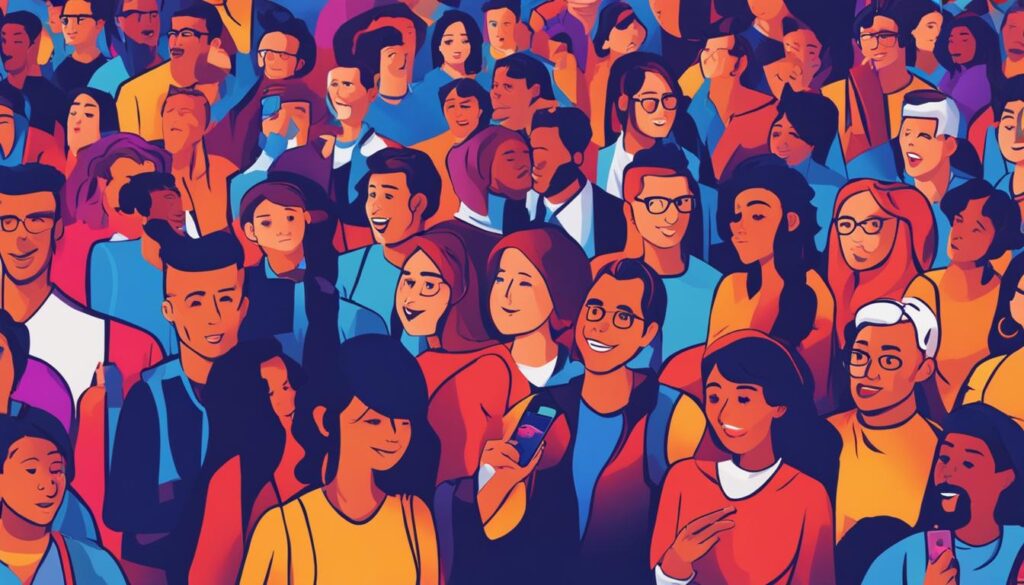
The Rise of Virtual Influencers
The rise of virtual influencers can be attributed to several factors. Firstly, their digital nature makes them easily accessible and relatable to younger generations who grew up immersed in technology and social media. Virtual influencers become a part of their online world, seamlessly blending in with the content they consume and the influencers they follow.
“Virtual influencers receive three times more engagement than real influencers and gain four times more followers for every post on Instagram.”
Secondly, virtual influencers offer a level of creativity and flexibility that real influencers may not be able to match. Brands have the opportunity to create and customize virtual influencers to align perfectly with their values and target market. This level of control allows for highly targeted and strategic influencer campaigns, increasing the effectiveness of brand messaging and product promotion.
Overall, virtual influencers have made a significant impact in the world of influencer marketing. Their popularity, engagement rates, and ability to resonate with their audience make them a powerful tool for brands and marketers. As technology continues to evolve, we can expect to see even more innovative and hyper-realistic virtual influencers capturing the attention and hearts of audiences worldwide.
Top Virtual Influencers You Should Know
Virtual influencers have become a prominent force in the world of social media, captivating audiences with their unique personalities and stunning visuals. Here are some of the top virtual influencers that you should know:
Lil Miquela
 One of the most influential virtual influencers in the industry, Lil Miquela has amassed a massive following and has been featured in numerous publications. With her distinct style and powerful messages, she has become a voice for inclusivity and social justice. Through her partnerships with various brands, Lil Miquela has solidified her position as a trendsetter and tastemaker in the digital space.
One of the most influential virtual influencers in the industry, Lil Miquela has amassed a massive following and has been featured in numerous publications. With her distinct style and powerful messages, she has become a voice for inclusivity and social justice. Through her partnerships with various brands, Lil Miquela has solidified her position as a trendsetter and tastemaker in the digital space.
Lu do Magalu
Created to promote Magazine Luiza, one of Brazil’s largest retail companies, Lu do Magalu has quickly risen to fame with her vibrant personality and commitment to social causes. With a focus on LGBTQ+ rights and environmental justice, Lu do Magalu uses her platform to educate and inspire her followers. Her authenticity and relatability have resulted in a huge social media following, making her a powerful advocate for positive change.
Rozy Oh
Hailing from South Korea, Rozy Oh represents the influential group known as “Generation MZ.” As a virtual influencer, Rozy Oh has appeared in commercials and campaigns, captivating audiences with her eye-catching visuals and engaging content. With her unique perspective and strong presence, she has become a symbol of empowerment for the younger generation.
Koffi Gram
Created by Diigitals, Koffi Gram is a fitness model virtual influencer who endorses luxury brands and promotes fitness-related products. With his sculpted physique and dedication to a healthy lifestyle, Koffi Gram inspires his followers to strive for greatness in their fitness journeys. His collaborations with popular brands have solidified his status as a go-to influencer in the fitness industry.
These virtual influencers represent a new era of digital influence, captivating audiences with their stunning visuals, unique personalities, and powerful messages. As they continue to gain popularity, their impact on the influencer marketing landscape is undeniable.
Benefits of Using Virtual Influencers
Using virtual influencers offers numerous benefits for brands looking to maximize their reach and impact in the digital space. Let’s explore the key advantages:
- Increased Reach: Virtual influencers have the ability to reach a vast audience on the platforms they utilize most. With their popularity among younger demographics, brands can tap into previously untapped markets and expand their reach.
- Lowered Brand Risk: By using virtual influencers, brands can minimize the risk of negative associations or controversies that can arise when working with real influencers. With virtual influencers, brands have full control over their behavior, ensuring alignment with the brand’s values and eliminating potential PR mishaps.
- Improved Product-Market Fit: Virtual influencers can be customized to fit perfectly with the brand’s target market. Through careful research and data analysis, brands can design virtual influencers that resonate with their audience, resulting in improved product-market fit and higher engagement.
- Minimized Costs: Owning a virtual influencer eliminates the need to negotiate salaries, travel expenses, and other costs associated with real influencers. This can significantly minimize marketing expenses and provide a cost-effective alternative for brands.
Using virtual influencers offers brands the unique opportunity to harness the power of authenticity, reach new audiences, and achieve their marketing goals while minimizing risks and costs.
Table: Benefits of Using Virtual Influencers
| Benefits | Description |
|---|---|
| Increased Reach | Tap into younger demographics and expand brand reach. |
| Lowered Brand Risk | Eliminate potential controversies and maintain full control over influencer behavior. |
| Improved Product-Market Fit | Create virtual influencers that resonate with the target audience for better engagement. |
| Minimized Costs | Reduce marketing expenses associated with real influencers. |
As brands continue to adapt to the ever-changing digital landscape, virtual influencers provide a compelling solution to drive brand awareness, engagement, and conversions. With their unique ability to captivate audiences and deliver tailored messaging, virtual influencers are a powerful tool for brands to consider in their marketing strategy.

Challenges of Using Virtual Influencers
While virtual influencers offer numerous benefits for brands, their utilization is not without its challenges. These challenges encompass a range of areas, from potential harmful social impact to legal implications and negative audience perception. Let’s explore some of the key challenges that arise when using virtual influencers:
Harmful Social Impact
One of the concerns associated with virtual influencers is the potential negative impact on followers’ self-esteem. These hyper-realistic avatars often adhere to specific beauty standards, which can perpetuate unrealistic ideals and contribute to feelings of inadequacy among impressionable audiences. Brands must consider the potential psychological effects that virtual influencers may have on their followers and take measures to promote healthy body image and self-acceptance.
Cross-Cultural Dilemmas
As virtual influencers gain global reach, brands face the challenge of navigating cross-cultural dilemmas. What may be acceptable or appealing in one culture could be considered inappropriate or offensive in another. It is crucial for brands to conduct thorough research and consult experts to ensure that virtual influencers are respectful of diverse cultures and do not inadvertently appropriate or misrepresent cultural elements.
Legal Implications
The use of virtual influencers raises various legal implications. In the realm of advertising, transparency is essential to maintain consumer trust. Brands must ensure that AI-generated content is clearly disclosed to the audience, avoiding any misleading or deceptive practices. Additionally, compliance with regulations regarding intellectual property, data privacy, and advertising guidelines is crucial to avoid potential legal issues.
Extensive Team Commitment
The successful management of virtual influencers requires a dedicated and committed team. From designing physical traits to crafting engaging content, a diverse set of skills is needed for their seamless operations. Brands must invest significant time and resources into maintaining a robust team capable of handling the complexities of virtual influencer management, content creation, and audience engagement.
Negative Audience Perception
Despite the growing acceptance of virtual influencers, there may still exist a negative perception among certain audiences. Some may view them as inauthentic or lacking credibility due to their non-human nature. It is essential for brands to continuously monitor and address these concerns to build trust and ensure that virtual influencers are perceived as valuable brand ambassadors.
As brands navigate the world of virtual influencers, it is important to be mindful of these challenges and proactively implement strategies to mitigate their impact. By considering the potential harmful social impact, cross-cultural dilemmas, legal implications, extensive team commitment, and audience perception, brands can maximize the benefits of virtual influencers while minimizing potential drawbacks.
The Role of AI in Influencer Marketing
AI has revolutionized the world of influencer marketing, offering a range of benefits to brands and marketers. With its advanced algorithms, AI enables personalization by providing targeted recommendations to users based on their preferences, interests, and behavior. This hyper-personalized approach helps brands to deliver relevant content to their target audience, resulting in increased engagement and conversion rates.
One of the key advantages of AI in influencer marketing is the ability to enhance engagement. AI algorithms can analyze massive amounts of data to identify the type of content that resonates most with users. By understanding audience preferences and interests, brands can optimize their influencer marketing strategies to deliver compelling and captivating content that drives meaningful interactions with their target audience.
In addition to personalization and enhanced engagement, AI also offers scalability in influencer marketing. With the help of AI-driven tools, brands can automate various tasks such as scheduling posts, analyzing data, and managing influencer relationships. This not only saves time and resources but also allows brands to scale their influencer marketing efforts effectively, reaching a wider audience and maximizing their impact.
AI-driven marketing tools, such as content creation and analytics, open up new possibilities for influencer marketing, enabling brands to continuously optimize their strategies and achieve better results.
The role of AI in influencer marketing is crucial for its future growth and success. As AI continues to evolve and improve, we can expect even more advanced tools and techniques to emerge, enabling brands to create highly targeted influencer campaigns that deliver exceptional results. By harnessing the power of AI, brands can reach their audience with relevant and engaging content, build strong relationships with influencers, and ultimately drive business growth in the digital age.

Table: Benefits of AI in Influencer Marketing
| Benefits | Description |
|---|---|
| Personalization | AI enables targeted recommendations based on user preferences, delivering personalized content to the right audience. |
| Enhanced Engagement | AI algorithms identify content that resonates with users, leading to higher engagement rates and meaningful interactions. |
| Scalability | AI automates tasks such as scheduling posts and analyzing data, allowing brands to scale their influencer marketing efforts efficiently. |
| AI-driven Marketing Tools | AI-powered tools empower brands to optimize content creation and analytics, unlocking new possibilities for influencer marketing. |
Case Studies of AI and Influence
We have witnessed the transformative power of AI in the realm of influencer marketing, giving rise to various innovative approaches and applications. Two notable case studies that exemplify the intersection of AI and influence are influencer bots and virtual reality influencers.
Influencer bots are AI-powered virtual entities that curate and disseminate fashion tips, tech reviews, and travel advice without the involvement of human influencers. These bots leverage advanced algorithms to analyze user preferences and generate personalized content, delivering tailored recommendations to their followers. With the ability to process vast amounts of data and adapt to evolving trends, influencer bots offer a cost-effective and scalable solution for brands seeking to engage with audiences in a highly targeted manner.
On the other hand, virtual reality influencers exist solely in the digital realm but have amassed real-life fan followings. These AI-generated characters blur the boundaries between the virtual and physical worlds, captivating audiences through immersive experiences. Virtual reality influencers engage with their followers through virtual reality headsets and interactive platforms, offering a glimpse into an augmented reality where their influence transcends conventional limitations. As the technology continues to mature, virtual reality influencers have the potential to redefine the landscape of influencer marketing, providing brands with entirely new avenues for captivating audiences.
AI has also revolutionized content generation in the influencer space. With AI-generated content, influencers can automate the creative process, producing blog posts, YouTube videos, and other forms of media at scale. By leveraging machine learning algorithms, AI can analyze vast amounts of data, identify relevant topics, and generate compelling and informative content. This not only enhances efficiency but also enables influencers to consistently produce high-quality content that resonates with their audience.
Case Study: AI-Generated Content
| Influencer | Platform | Content |
|---|---|---|
| AI Influencer A | Blog | AI-generated fashion tips |
| AI Influencer B | YouTube | AI-produced tech reviews |
| AI Influencer C | AI-generated travel guides |

As the AI landscape continues to advance, we can expect further innovations in the realm of influencer marketing. From influencer bots to virtual reality influencers and AI-generated content, the possibilities are constantly expanding. These case studies underline the immense potential of AI to revolutionize the way brands and influencers connect with their audiences and shape the future of influence.
Conclusion
In the ever-evolving landscape of influencer marketing, the future holds exciting possibilities with the integration of AI and influence. As technology continues to advance, we can expect to see hyper-personalized content tailored to individual preferences. AI algorithms will enable real-time engagement between virtual influencers and their followers, creating immersive experiences that bridge the gap between the digital and physical worlds.
The concept of hyperreal virtual influencers, indistinguishable from real humans, is on the horizon. These AI-powered avatars will revolutionize the influencer space, offering brands unprecedented opportunities for marketing and storytelling. With the ability to interact with followers in real-time, virtual influencers will provide authentic, personalized experiences that resonate with audiences on a deeper level.
However, as we embrace the future of AI and influence, it is essential to address the ethical considerations and potential challenges that arise. From ensuring transparency in advertising to maintaining cultural sensitivity, brands must navigate these complexities to build trust and credibility with their audience. Balancing the benefits of AI-driven influencer marketing with its potential drawbacks will be crucial in shaping a responsible and sustainable future.
With hyper-personalized content, real-time engagement, and the emergence of hyperreal virtual influencers, the future of AI-powered influencer marketing holds immense promise. As marketers and consumers alike, we are at the forefront of this exciting evolution, where creativity and technology converge to shape the digital experiences of tomorrow.
FAQ
What are hyper-realistic AI influencers?
Hyper-realistic AI influencers, also known as virtual influencers or AI influencers, are computer-generated digital characters that resemble real influencers in appearance and behavior. They post content on social media, build relationships with followers, and partner with brands to promote products and services.
How are virtual influencers created?
The creation of a virtual influencer involves a detailed process. It starts with researching the target audience to understand their preferences and interests. Based on this research, a personality and narrative for the influencer are crafted. The influencer’s physical traits are then designed to resemble an actual person, using motion capture technology to bring them to life. Content creation and interaction with followers are usually handled by a team behind the scenes, although there are some virtual influencers who are semi-autonomous and rely on artificial intelligence for their personality and appearance.
How popular are virtual influencers?
Virtual influencers have gained popularity among the public, especially among younger audiences. A survey conducted in the United States revealed that 58% of respondents followed at least one virtual influencer on social media. Among Gen Z, 75% reported following a virtual influencer. Virtual influencers receive three times more engagement than real influencers and gain four times more followers for every post on Instagram. Despite not being real people, virtual influencers seem to have a significant influence on their followers and are perceived as authentic in the digital space.
Who are some notable virtual influencers?
There are several notable virtual influencers in the world. Lil Miquela, one of the most famous virtual influencers, has amassed millions of followers and has been named one of TIME Magazine’s most influential people on the internet. Lu do Magalu, created to promote Magazine Luiza in Brazil, has a massive social media following and advocates for LGBTQ+ rights and environmental justice. Rozy Oh, a South Korean virtual influencer, represents the influential group known as “Generation MZ” and has appeared in commercials and campaigns. Koffi Gram, a fitness model created by Diigitals, endorses luxury brands and fitness-related products.
What are the benefits of using virtual influencers?
Using virtual influencers offers several benefits for brands. They can reach younger audiences on the platforms they use most and can be in multiple places at once. Virtual influencers also allow brands to have full control over their behavior and can be customized to fit perfectly with the brand’s values and target market. Additionally, owning a virtual influencer can minimize costs as there is no need to negotiate salaries or deal with potential controversies associated with real influencers.
What challenges do virtual influencers present?
Despite their benefits, virtual influencers also pose challenges. Their presence can have a harmful impact on followers’ self-esteem due to the specific beauty standards they adhere to. As global markets are targeted, cross-cultural challenges may arise, and brands need to be careful not to misappropriate cultural elements. Legal implications may arise, such as transparency in advertising and disclosure of AI-generated content. Maintaining virtual influencers over time requires consistent commitment from teams, and there may be concerns about the authenticity and credibility of virtual influencers among the audience.
What is the role of AI in influencer marketing?
AI plays a significant role in influencer marketing. It enables personalization by providing targeted recommendations to users based on their preferences. AI algorithms can predict what type of content keeps users engaged and provide deep insights into audience behavior. AI also helps in scalability by automating tasks such as scheduling posts, replying to comments, and outreach efforts. AI-driven marketing tools, such as content creation and analytics, open up new possibilities for influencer marketing.
Are there any case studies of AI and influence?
AI has enabled the creation of influencer bots that curate fashion tips, tech reviews, and travel advice without the need for human influencers. Virtual reality influencers exist in the digital realm and have real-life fan followings. AI also contributes to the generation of content, such as blog posts and YouTube videos, automating the creative process.
What does the future hold for AI-driven influencer marketing?
AI and influence have the potential to shape the future of digital experiences. Despite ethical concerns, the synergy between AI and influence can lead to hyper-personalized, highly engaging content. The future may bring advancements in personalization, real-time engagement with virtual influencers, and the emergence of hyperreal virtual influencers who are indistinguishable from real humans. The future is poised for an exciting evolution in the world of AI-driven influencer marketing.
Olivia stands at the helm of Press Report as our Editor-in-chief, embodying the pinnacle of professionalism in the press industry. Her meticulous approach to journalism and unwavering commitment to truth and accuracy set the standard for our editorial practices. Olivia’s leadership ensures that Press Report remains a trusted source of news, maintaining the highest journalistic integrity in every story we publish.
AI in Education
Understanding Neural Networks: Your Guide to AI Future
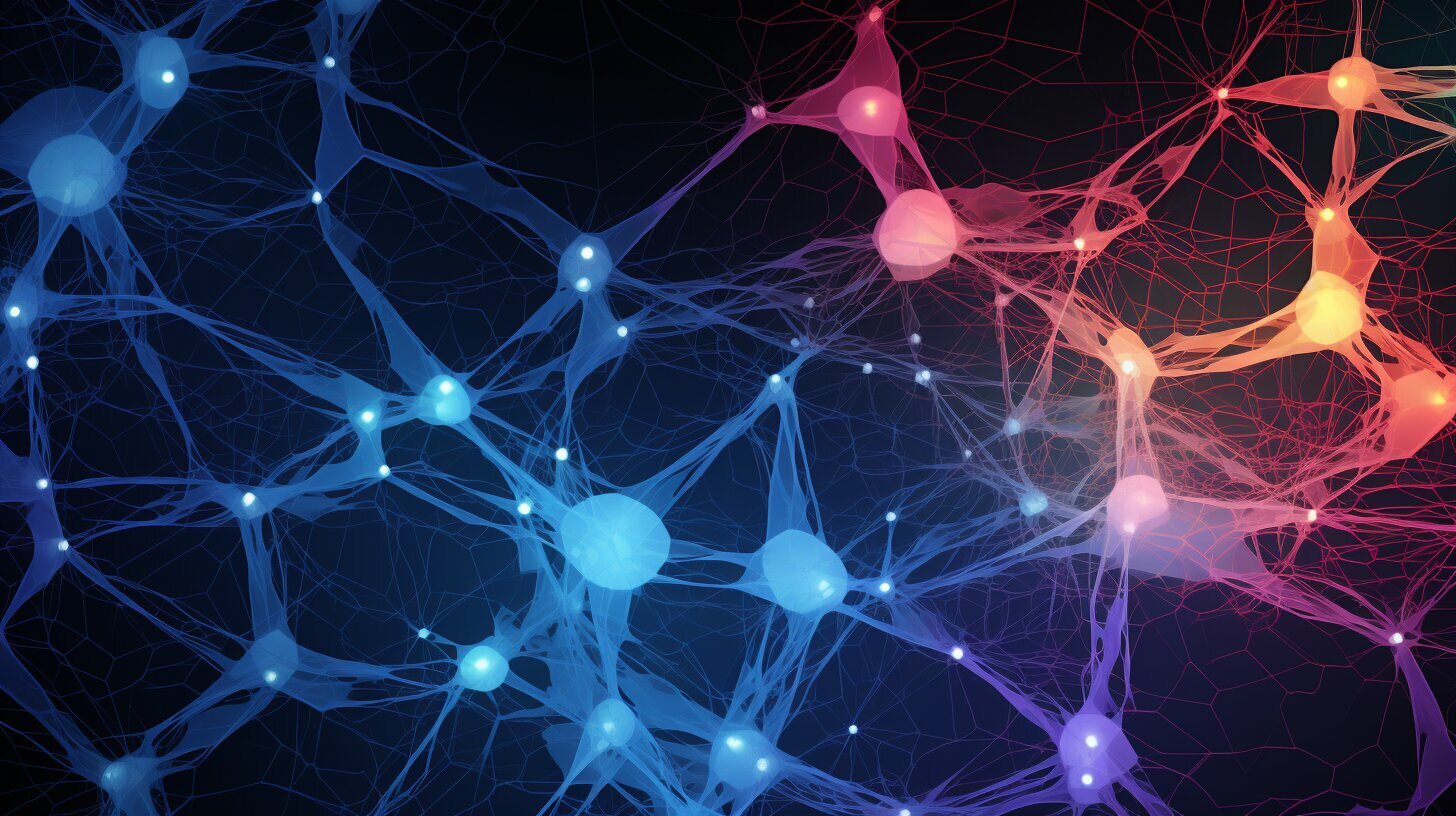
Welcome to our comprehensive guide on neural networks, the core of artificial intelligence (AI) and the future of technology. This post will explore the fascinating world of neural networks, exploring how they impact deep learning and machine learning, as well as their applications in various fields such as pattern recognition, data analysis, and natural language processing.
Key Takeaways:
- Neural networks are computational models inspired by the human brain and are the foundation of AI.
- They consist of interconnected artificial neurons that process and transmit information.
- Neural networks can recognize patterns, make predictions, and solve complex problems in diverse domains.
- The structure of a neural network includes input layers, hidden layers, and an output layer, each performing specific computations.
- Training a neural network involves modifying link weights and biases to improve its performance.
- There are different types of neural networks designed for specific tasks, such as image recognition, natural language processing, and speech recognition.
- Neural networks offer advantages like managing complicated patterns, adaptability, parallel processing, and successful generalization of learned knowledge.
What is a Neural Network?
A neural network, also known as an artificial neural network (ANN) or simulated neural network (SNN), is a computational model inspired by the structure and functioning of the human brain. It is a fundamental component of machine learning and serves as the foundation for deep learning algorithms. Neural networks consist of interconnected nodes, known as artificial neurons, which process and transmit information.
By learning from data, neural networks can recognize patterns, make predictions, and solve complex problems. This ability makes them invaluable in various fields, including image recognition, natural language processing, speech recognition, medical diagnosis, self-driving cars, financial prediction, gaming, and fraud detection.
Neural networks simulate the way the human brain processes information, allowing them to tackle tasks that were previously challenging for traditional algorithms. Their interconnected structure and ability to learn from data make them highly adaptable and efficient at solving complex problems. Through their capacity to recognize patterns and make predictions, neural networks are revolutionizing artificial intelligence and shaping the future of technology.
| Advantages of Neural Networks: |
|---|
| Manage complicated patterns and nonlinear interactions |
| Adaptability and continuous learning |
| Parallel processing of massive amounts of data |
| Automatic feature extraction |
| Successful generalization from training to real-world scenarios |
“Neural networks excel at managing complicated patterns and nonlinear interactions that may be challenging for other algorithms.”
What makes neural networks so powerful?
- Neural networks can manage complicated patterns and nonlinear interactions, making them highly effective in solving complex problems that traditional algorithms may struggle with.
- They are adaptable and have the ability to continuously learn from new data, improving their performance over time.
- Neural networks can process massive amounts of data in parallel, providing faster and more efficient computing capabilities.
- With automatic feature extraction, neural networks eliminate the need for manual feature engineering, making them suitable for handling unstructured data.
- Neural networks have the capacity to generalize successfully from training data to real-world scenarios, allowing them to make accurate predictions and classifications in various applications.
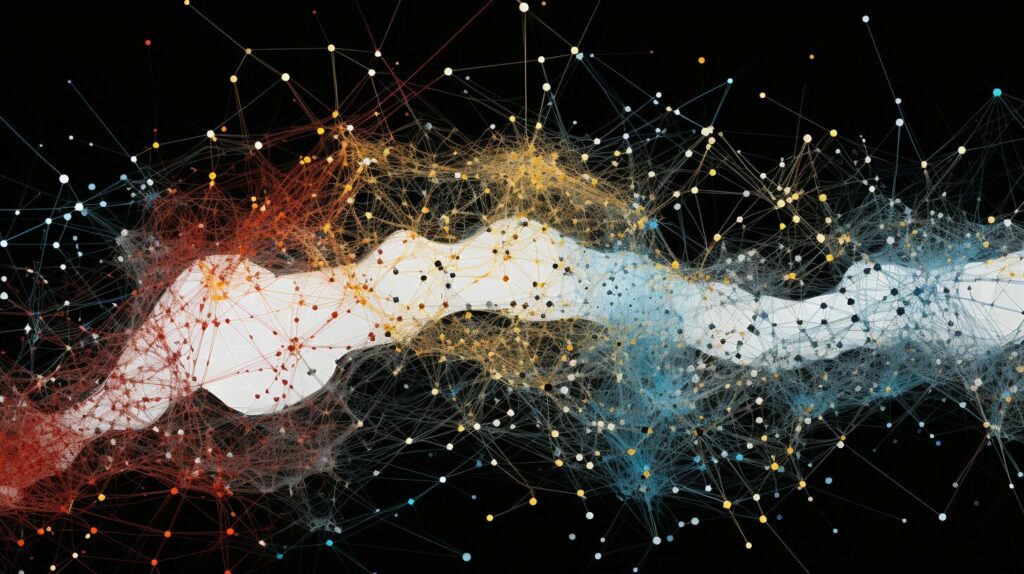
Conclusion
Neural networks, as computational models inspired by the human brain, play a critical role in machine learning and the development of artificial intelligence. Their ability to recognize patterns, make predictions, and solve complex problems positions them as a cornerstone of modern technology. With ongoing advancements in interpretability, efficiency, and integration with emerging technologies, neural networks are poised to reshape various industries and drive innovation in the years to come.
The Structure of a Neural Network
A neural network is composed of interconnected artificial neurons arranged in layers. This structure allows the network to process and transmit information, enabling it to recognize patterns, make predictions, and solve complex problems. The structure of a neural network consists of three main types of layers: the input layer, hidden layers, and output layer.
The input layer is where the network receives data or input. Each input is connected to every neuron in the first hidden layer through weighted connections. These weighted connections determine the strength of the relationship between the inputs and the neurons in the hidden layers. The hidden layers perform mathematical operations on the inputs and pass the results to the next layer in the network. This process continues until the output layer, which provides the final predictions or outputs.
Activation functions play a crucial role in the structure of a neural network. They introduce non-linearities into the computations, allowing the network to model complex relationships between the inputs and outputs. Common activation functions include the sigmoid function and Rectified Linear Unit (ReLU). These functions determine the output of each neuron based on its inputs and determine whether it should “fire” or transmit information to the next layer.
| Layer | Description |
|---|---|
| Input Layer | Receives the data or input |
| Hidden Layers | Perform computations on the inputs and transmit the results |
| Output Layer | Provides the final predictions or outputs |
The structure of a neural network, with its interconnected artificial neurons, weighted connections, mathematical operations, and activation functions, allows it to process complex data and solve a wide range of problems in various fields.
Training a Neural Network
Training a neural network is a crucial step in harnessing its power and enabling it to make accurate predictions and classifications. During the training process, the network learns from data by iteratively modifying its link weights and biases, ultimately reducing the discrepancy between expected and actual outputs. This iterative process is known as backpropagation, and it relies on optimization algorithms to update the network’s parameters based on calculated gradients.
The modification of link weights and biases is essential for improving the network’s accuracy. By adjusting these values, the neural network can fine-tune its decision-making process, allowing it to better recognize patterns and make informed predictions. The training process can involve thousands or even millions of iterations, depending on the complexity of the problem and the size of the dataset.
Backpropagation and optimization algorithms play a vital role in training a neural network. Backpropagation calculates the gradients for each weight and bias, indicating how the modification of each parameter will affect the overall performance of the network. Optimization algorithms use these gradients to update the parameters and move the network towards better accuracy. Common optimization algorithms include stochastic gradient descent (SGD), Adam, and RMSprop.
Backpropagation and Optimization Algorithms
The backpropagation algorithm is the cornerstone of training neural networks. It works by propagating the error from the network’s output layer back to the input layer, adjusting the weights and biases along the way. This process allows the network to learn from its mistakes and make the necessary corrections to improve its predictions.
“Backpropagation is a key concept in training neural networks. By propagating the error backwards through the network, we can adjust the weights and biases to minimize the discrepancy between expected and actual outputs. This iterative process enables the network to learn and improve over time.”
Optimization algorithms, on the other hand, determine how the network’s parameters should be updated based on the calculated gradients. These algorithms consider factors such as learning rate, momentum, and regularization to ensure the network converges to an optimal solution. The choice of optimization algorithm can significantly impact the training process and the ultimate performance of the neural network.
| Optimization Algorithm | Description | Advantages |
|---|---|---|
| Stochastic Gradient Descent (SGD) | Updates the parameters after each sample or batch, making it computationally efficient. | – Simplicity and ease of implementation – Low memory requirements – Suitable for large datasets |
| Adam | Adaptive learning rate algorithm that combines the benefits of AdaGrad and RMSprop. | – Efficient handling of sparse gradients – Fast convergence – Robust performance across various datasets |
| RMSprop | Divides the learning rate by a running average of the magnitudes of previous gradients. | – Fast convergence – Ability to handle non-stationary objectives – Suitable for recurrent neural networks |
Choosing the right optimization algorithm depends on factors such as dataset size, problem complexity, and available computational resources. Each algorithm has its strengths and weaknesses, and experimentation is often necessary to determine the optimal choice for a specific neural network training task.

Types of Neural Network
Neural networks come in various types, each tailored for specific applications and challenges. Let’s explore some of the most common types:
Perceptron
The perceptron is the most basic architecture of a neural network. It is limited to binary classification tasks and consists of a single layer of artificial neurons. While simple in structure, perceptrons paved the way for more complex neural network models.
Feedforward Neural Network (FNN) or Multi-Layer Perceptrons (MLPs)
A feedforward neural network, also known as a multi-layer perceptron, is a widely used neural network architecture. Information flows in one direction, from the input layer to the output layer. FNNs are employed in various applications, including classification, speech recognition, and pattern recognition.
Convolutional Neural Network (CNN)
A convolutional neural network is designed for processing grid-like data, such as images. It employs convolutional layers to extract important features and hierarchical structures in the data. CNNs excel in image processing tasks like pattern recognition, machine translation, and computer vision.
Recurrent Neural Network (RNN)
A recurrent neural network is ideal for handling sequential data, where the order of information is crucial. RNNs capture temporal relationships and are commonly used in tasks such as text processing, text-to-speech conversion, image tagging, and future predictions.
Long Short-Term Memory (LSTM) Network
An LSTM network is a type of recurrent neural network that addresses the vanishing gradient problem and retains information over a longer period of time. LSTMs are widely used in applications such as gesture recognition, speech recognition, and text prediction.
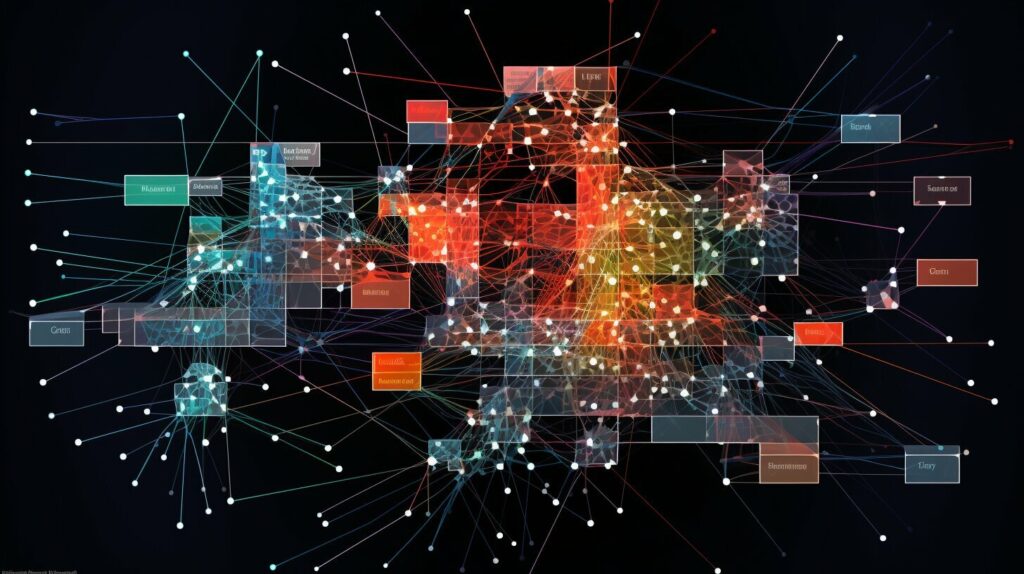
These types of neural networks form the foundation of AI and enable machines to learn, recognize patterns, and make predictions. Each type has its strengths and is suited for different tasks and data types. By understanding the different architectures, we can leverage the power of neural networks to solve complex problems in various fields.
The Advantages of Neural Networks
Neural networks offer several key advantages that make them a powerful tool in various applications. One of the main strengths of neural networks is their ability to manage complicated patterns and nonlinear interactions, which can be challenging for other algorithms. By mimicking the structure and functioning of the human brain, neural networks excel at recognizing complex relationships and making accurate predictions.
Another advantage of neural networks is their adaptability and continuous learning capabilities. They can learn from new data and improve their performance over time, making them highly effective in dynamic and evolving environments. This adaptability allows neural networks to stay up-to-date with changing patterns and trends, ensuring their predictions and classifications remain accurate and relevant.
Neural networks also benefit from parallel processing, which enables them to handle massive amounts of data simultaneously. This parallelism leads to more efficient computing and faster training durations, making neural networks suitable for real-time applications and large-scale data analysis.
Another notable advantage of neural networks is their automatic feature extraction capability. Unlike traditional algorithms that require manual feature engineering, neural networks can automatically identify and extract relevant features from raw data. This eliminates the need for human intervention and streamlines the data preprocessing phase.
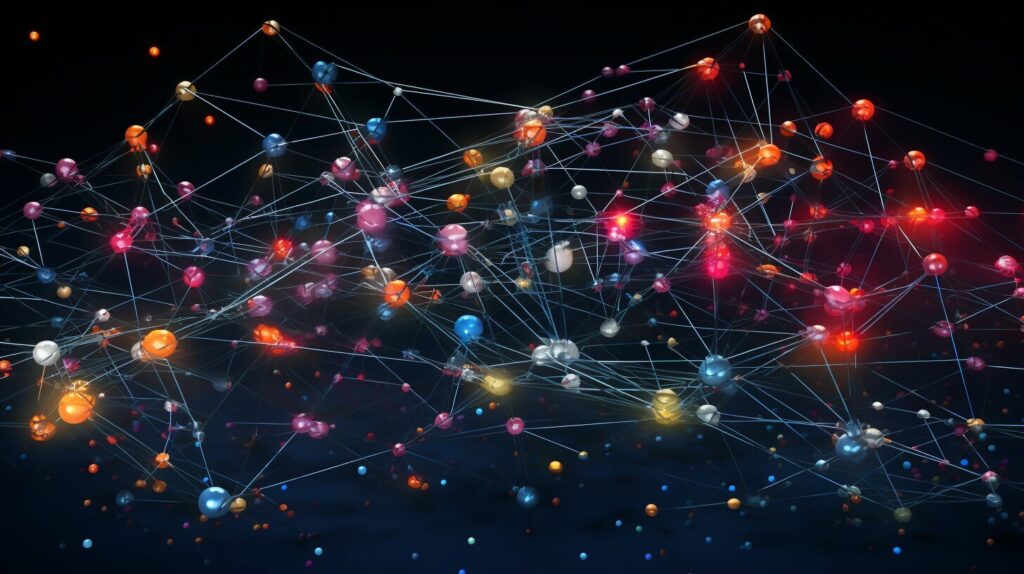
| Advantages | Description |
|---|---|
| Manage Complicated Patterns | Neural networks excel at recognizing and managing complex patterns and nonlinear interactions. |
| Adaptability and Continuous Learning | Neural networks can learn from new data and continuously improve their performance over time. |
| Parallel Processing | Neural networks can process massive amounts of data in parallel, enabling more efficient computing and faster training durations. |
| Automatic Feature Extraction | Neural networks can automatically extract relevant features from raw data, eliminating the need for manual feature engineering. |
Conclusion
In conclusion, the future of neural networks holds immense potential for innovation and transformation. As we continue to develop these powerful computational models, we can expect advancements in interpretability, efficiency, and integration with emerging technologies. This will drive new possibilities and shape various industries.
Neural networks are at the forefront of artificial intelligence, enabling breakthroughs in image recognition, natural language processing, and more. With their ability to learn from data and recognize complex patterns, they hold the key to achieving human-like intelligence in machines.
By enhancing interpretability, neural networks will provide a deeper understanding of how they reach their conclusions, making them more reliable and trustworthy. Additionally, improvements in efficiency will allow for faster computations and training, accelerating the development of AI applications.
Integration with emerging technologies will further expand the capabilities of neural networks, paving the way for exciting advancements in fields such as healthcare, robotics, and beyond. As these technologies continue to evolve, neural networks will reshape industries and unlock new possibilities for human progress.
FAQ
What is a neural network?
A neural network is a computational model inspired by the structure and functioning of the human brain. It is also known as an artificial neural network (ANN) or simulated neural network (SNN). Neural networks are essential components of machine learning and the foundation of deep learning algorithms.
How does a neural network work?
Neural networks consist of interconnected nodes, or artificial neurons, that process and transmit information. By learning from data, neural networks can recognize patterns, make predictions, and solve complex problems. They have applications in various fields, including image recognition, natural language processing, and speech recognition.
What is the structure of a neural network?
The structure of a neural network consists of layers of interconnected artificial neurons. These layers are divided into three types: the input layer, one or more hidden layers, and an output layer. The input layer receives data, which is processed through hidden layers using weighted connections. Each artificial neuron applies a mathematical operation on its inputs and passes the output to the next layer. The output layer provides the final predictions or outputs.
How is a neural network trained?
Training a neural network involves iteratively modifying the network’s link weights and biases to reduce the discrepancy between expected and actual outputs. This process, known as backpropagation, utilizes optimization algorithms to update the parameters based on calculated gradients. The network learns by continuously improving its ability to make accurate predictions through the training process.
What are the types of neural networks?
There are several types of neural networks based on specialized architectures and variations tailored for specific applications and challenges. The most common types include perceptron, feedforward neural network, convolutional neural network, recurrent neural network, and long short-term memory network.
What are the advantages of neural networks?
Neural networks excel at managing complicated patterns and nonlinear interactions that may be challenging for other algorithms. They have the ability to adapt and learn from new data, process massive amounts of data in parallel, automatically extract features, and successfully generalize from training data to unknown examples. These advantages make neural networks valuable tools in various applications.
What does the future hold for neural networks?
The future of neural networks holds tremendous potential, with advancements in interpretability, efficiency, and integration with emerging technologies expected to drive innovation. Neural networks are poised to enable machines with human-like intelligence and reshape various industries, from healthcare to robotics.
Source Links
- https://www.wired.com/story/guide-artificial-intelligence/
- https://medium.com/@allen_intellibrain/the-ultimate-guide-to-understanding-neural-networks-e714a12546de
- https://indatalabs.com/blog/neural-networks-ai
Olivia stands at the helm of Press Report as our Editor-in-chief, embodying the pinnacle of professionalism in the press industry. Her meticulous approach to journalism and unwavering commitment to truth and accuracy set the standard for our editorial practices. Olivia’s leadership ensures that Press Report remains a trusted source of news, maintaining the highest journalistic integrity in every story we publish.
AI in Education
Exploring Algorithms: Your Friendly Guide to Understanding
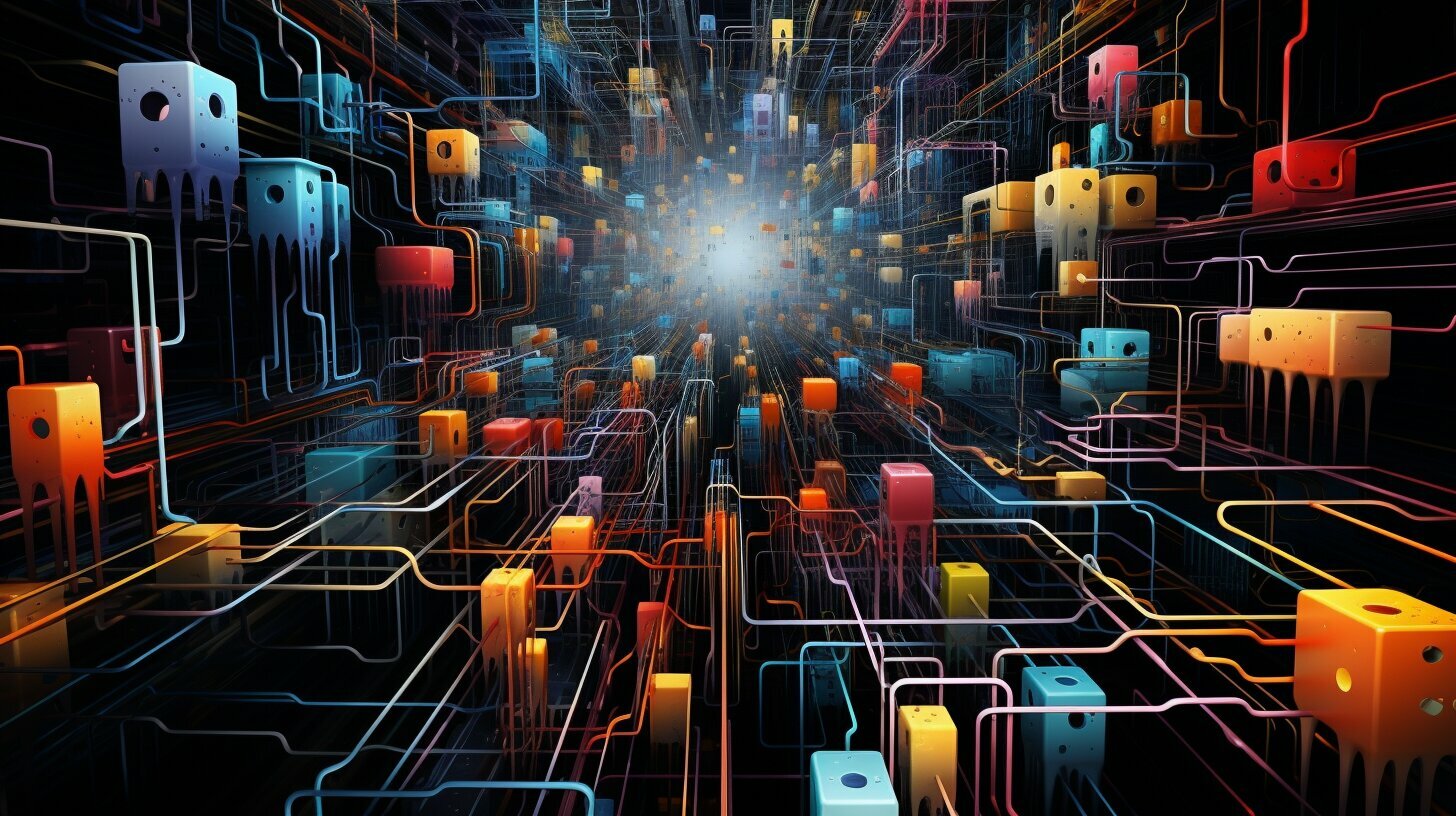
In today’s data-driven world, algorithms play a crucial role in various industries. Whether you are a student or a professional, understanding algorithms is essential for overcoming challenges in any field. Join us on a journey to explore the fascinating world of algorithms and unravel their complexities.
From machine learning algorithms to data analysis algorithms, optimization algorithms to search algorithms, algorithms are the building blocks that drive innovation and efficiency in computer science. In this article, we will explore different types of algorithms, discuss their applications, and shed light on concepts like algorithmic complexity and efficiency.
Key Takeaways:
- Algorithms are essential tools for problem-solving in various domains.
- Understanding algorithms is crucial for students and professionals in any field.
- Machine learning algorithms, data analysis algorithms, and optimization algorithms are just a few examples of algorithms used in different applications.
- Algorithmic complexity and efficiency are important considerations in algorithm design.
- By exploring different types of algorithms and their applications, individuals can improve their understanding and proficiency in algorithmic design.
What Are Algorithms?
In computer science, algorithms are a fundamental concept that underpins countless applications and processes. Simply put, algorithms are sets of step-by-step instructions that enable computers to solve specific tasks or problems. They serve as the building blocks for solving complex problems efficiently and effectively.
At their core, algorithms take an input or a set of inputs, perform a series of operations or computations, and produce an output or a result. These operations can range from simple calculations to more intricate manipulations of data. Algorithms can be designed to process various types of inputs, such as numerical data, text, images, or even real-time streaming data.
An algorithm can be thought of as a recipe: it provides a clear and precise sequence of instructions that a computer can follow to achieve a desired outcome. By breaking down problems into manageable steps, algorithms allow us to tackle complex tasks in a systematic and efficient manner. They are the backbone of computer science and play a crucial role in areas such as data analysis, machine learning, optimization, and search algorithms.
Whether it’s finding the shortest path between two points, sorting a list of items, or analyzing vast amounts of data, algorithms are an essential tool in the world of computer science. By understanding how algorithms work, we gain valuable insights into the inner workings of computational processes and can harness their power to solve a wide range of problems.
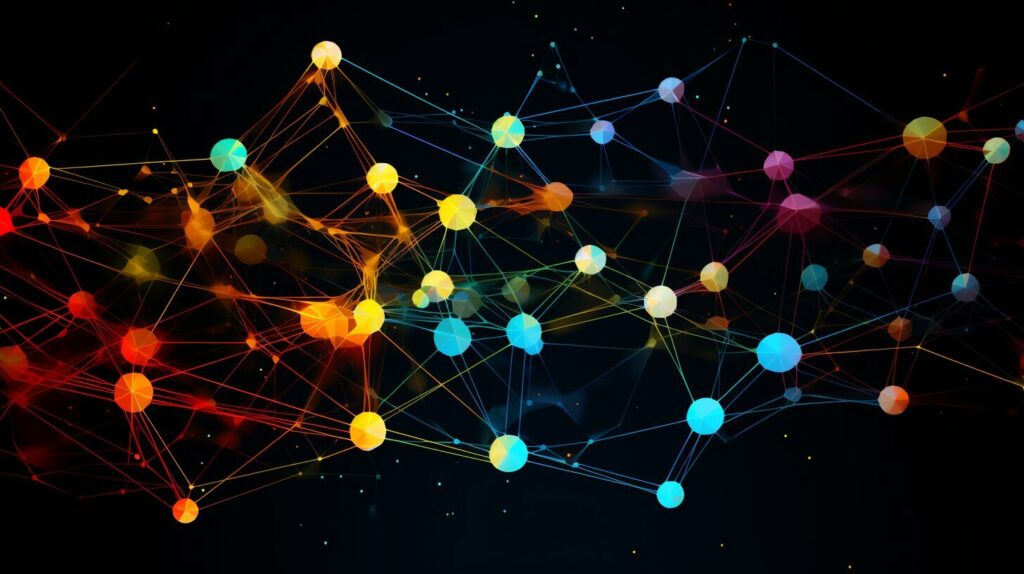
What Are Algorithms?
The Basics of Algorithm Design
When it comes to algorithm design, breaking down a complex problem into manageable subproblems is essential. This systematic approach allows us to tackle each component individually and eventually solve the overall problem. In algorithm design, we consider three key components: input, output, and control structures.
The input is the data or information that the algorithm operates on. It can be anything from a list of numbers to a text file. The output, on the other hand, is the result that we expect from the algorithm. It can be a sorted list, a specific value, or even just a message. Control structures, such as loops and conditional statements, determine the flow of the algorithm and ensure that the necessary operations are performed.
Efficiency is another crucial aspect of algorithm design. An efficient algorithm uses the minimum amount of resources, such as time and memory, to solve a problem. By considering factors like algorithmic complexity and runtime analysis, we can evaluate and improve the efficiency of our algorithms. This optimization is especially important when dealing with large datasets or time-sensitive operations.
Example: Finding the Maximum Number in an Array
“Given an array of numbers, we want to find the maximum value. To solve this problem, we can start by assuming the first number in the array is the maximum. Then, we iterate through the remaining numbers in the array and compare each one with our current maximum. If we find a larger number, we update our maximum. At the end of the iteration, we have the maximum value.”
| Input | Output |
|---|---|
| Input array: [5, 9, 3, 7, 2] | Maximum value: 9 |
Algorithm design is a foundational skill in computer science and is applicable across various domains. By understanding how to break down problems, design efficient algorithms, and consider input, output, and control structures, we can solve complex problems effectively. Whether you’re solving mathematical equations or analyzing big data, algorithm design is an essential tool in your problem-solving arsenal.
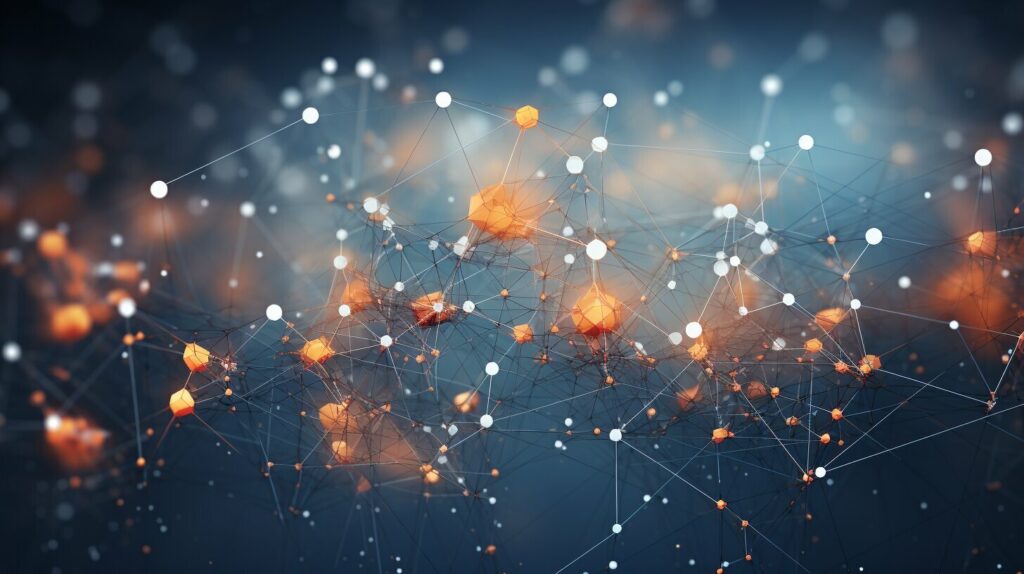
Understanding Algorithm Complexity
In the world of computer science, algorithm complexity plays a pivotal role in determining the efficiency of an algorithm. When we talk about algorithm complexity, we are referring to the amount of time and space required for an algorithm to run. Time complexity focuses on how an algorithm’s runtime grows with the size of the input, while space complexity looks at the amount of memory required by an algorithm.
One of the commonly used notations for describing algorithm complexity is Big O notation. It provides an upper bound on the growth rate of an algorithm’s runtime or space usage. For example, an algorithm with a time complexity of O(n^2) means that its runtime grows quadratically with the size of the input (n). As the input size increases, the runtime of the algorithm increases exponentially.
It is important to understand algorithm complexity as it helps us analyze and compare different algorithms. By knowing the time and space complexity of algorithms, we can make informed decisions about which algorithm is best suited for a particular problem. This knowledge also allows us to optimize algorithms and improve their efficiency, saving valuable computational resources.
Table: Time and Space Complexity of Fundamental Algorithms
| Algorithm | Time Complexity | Space Complexity |
|---|---|---|
| Bubble Sort | O(n^2) | O(1) |
| Quicksort | O(n log n) | O(log n) |
| Binary Search | O(log n) | O(1) |
“Understanding algorithm complexity is essential for designing efficient algorithms. By analyzing the time and space complexity, we can identify bottlenecks and make optimizations to improve performance. Big O notation serves as a standardized way to describe complexity and compare algorithms. It allows us to reason about scalability and estimate the resources required to run an algorithm, making it an invaluable tool for algorithm designers and developers.”
By delving into algorithm complexity, we gain valuable insights into the performance characteristics of different algorithms. This knowledge helps us make informed decisions when choosing algorithms for specific tasks and allows us to optimize our solutions for improved efficiency. Furthermore, understanding algorithm complexity is a fundamental concept in computer science, laying the groundwork for more advanced topics such as algorithmic efficiency and algorithmic analysis.

Sorting and Searching Algorithms
In the world of computer science, sorting and searching algorithms play a vital role in organizing and retrieving data efficiently. Sorting algorithms arrange data in a specific order, while searching algorithms help us find specific data within a dataset. These algorithms are fundamental to various applications and are widely used in real-world scenarios.
Sorting Algorithms
One popular sorting algorithm is the bubble sort, which compares adjacent elements and swaps them if they are in the wrong order. This process is repeated until the entire dataset is sorted. Bubble sort is intuitive and easy to implement, but it may not be the most efficient algorithm for large datasets.
Another commonly used sorting algorithm is quicksort, which follows the divide-and-conquer approach. It selects a pivot element, partitions the dataset into subarrays based on the pivot, and recursively applies the same process to each subarray until the entire dataset is sorted. Quicksort is generally considered more efficient than bubble sort and is often used for larger datasets.
Searching Algorithms
When it comes to searching algorithms, binary search and linear search are widely used. Binary search is an efficient algorithm that works on sorted datasets. It repeatedly divides the dataset in half and compares the target value with the middle element until the target value is found or determined to be absent. Binary search has a time complexity of O(log n), making it significantly faster than linear search for large datasets.
Linear search, on the other hand, is a simple but less efficient algorithm that sequentially checks each element in the dataset until the target value is found or the end of the dataset is reached. Linear search has a time complexity of O(n), where n is the size of the dataset, making it less efficient than binary search for larger datasets.
| Sorting Algorithm | Time Complexity | Space Complexity |
|---|---|---|
| Bubble Sort | O(n^2) | O(1) |
| Quicksort | O(n log n) | O(log n) |
Table: Comparison of sorting algorithms.
In conclusion, sorting and searching algorithms are fundamental tools in computer science. They allow us to efficiently organize and retrieve data, making them essential in various applications. Understanding these algorithms and their complexities can help us optimize our code and improve overall performance.
Recursion and Iteration in Algorithms
Recursion and iteration are two fundamental concepts in algorithm design that play a crucial role in solving complex problems efficiently. Both approaches have their distinct advantages and are used in various algorithms, such as quicksort and binary search.
Recursion:
Recursion is a process in which a function calls itself repeatedly until it reaches a base case. It is particularly useful when solving problems that can be broken down into smaller subproblems. By breaking down a complex problem into simpler versions of itself, recursion provides an elegant and concise solution. However, it’s important to define a base case to prevent infinite recursion and ensure termination.
Iteration:
Iteration, on the other hand, involves using loops to repeat a set of instructions until a specified condition is met. It is often preferred when solving problems that require repetitive calculations or operations. Unlike recursion, iteration follows a sequential execution of a loop, making it easier to understand and debug. It is a more efficient strategy for solving certain types of problems, especially those that do not require breaking down into smaller subproblems.
When choosing between recursion and iteration, it’s essential to consider the nature of the problem at hand. Some complex problems may lend themselves better to a recursive approach, while others may benefit from an iterative solution. Understanding the strengths and limitations of each approach allows us to design algorithms that optimize efficiency and effectiveness.

Advantages of Recursion and Iteration
- Recursion: The recursive approach offers a concise and elegant solution, particularly for problems that can be broken down into smaller subproblems. It allows for a more natural and intuitive implementation in certain scenarios.
- Iteration: Iterative algorithms tend to be more efficient in terms of memory usage and execution speed. They follow a sequential execution, making it easier to analyze and optimize for performance.
Recursion and iteration are powerful tools in algorithm design, offering different approaches to problem-solving. Whether we choose to break down complex problems with recursion or use iterative loops, understanding these concepts is essential for developing efficient algorithms that tackle real-world challenges.
| Algorithm | Application |
|---|---|
| Quicksort | Sorting large datasets efficiently |
| Binary search | Searching for specific elements in a sorted dataset |
Popular Algorithms and their Applications
Algorithms play a vital role in various industries, offering efficient solutions to complex problems. Let’s take a closer look at some popular algorithms and their real-world applications:
Dijkstra’s Algorithm
This algorithm is commonly used in route planning and navigation systems. By finding the shortest path between nodes in a weighted graph, Dijkstra’s algorithm helps optimize travel routes and reduce travel time. It has wide applications in GPS systems, logistics management, and transportation networks.
PageRank Algorithm
Developed by Larry Page and Sergey Brin, the PageRank algorithm revolutionized web search engines. This algorithm assigns a numerical weight to each web page based on the number and quality of inbound links. PageRank plays a crucial role in ranking search engine results and determining the relevance and authority of web pages.
Apriori Algorithm
The Apriori algorithm is widely used in market basket analysis and recommendation systems. It helps identify patterns and associations between items in a dataset, allowing businesses to understand customer behavior, cross-sell products, and make personalized product recommendations. Retailers and e-commerce companies often leverage the power of the Apriori algorithm to improve sales and customer satisfaction.
In addition to these algorithms, many other popular algorithms like the K-means algorithm for clustering, the A* search algorithm for pathfinding, and the RSA encryption algorithm for secure communication have notable real-world applications. Understanding and leveraging these algorithms can offer significant benefits in terms of efficiency, accuracy, and decision-making.
| Algorithm | Real-World Application |
|---|---|
| Dijkstra’s Algorithm | Route planning, navigation systems |
| PageRank Algorithm | Web search engines, search result ranking |
| Apriori Algorithm | Market basket analysis, recommendation systems |
| K-means Algorithm | Data clustering, customer segmentation |
| A* Search Algorithm | Pathfinding, game AI |
| RSA Encryption Algorithm | Secure communication, cryptography |
Conclusion
In conclusion, understanding algorithms is essential for efficient problem-solving in various fields. Algorithms serve as the foundation of computer science, enabling us to solve complex problems efficiently. By exploring different types of algorithms and their real-world applications, we can enhance our proficiency in algorithmic design.
Efficiency is a key aspect of algorithmic design, as it determines the resources required to run an algorithm. With a deep understanding of algorithms, we can optimize their performance and improve overall efficiency in problem-solving processes.
Algorithms play a vital role in data analysis, optimization, and search. They are employed in domains such as finance, text analysis, and data management, enabling us to extract valuable insights and make informed decisions. By harnessing the power of algorithms, we can significantly enhance our problem-solving capabilities.
To excel in the rapidly evolving world of technology and data, it is crucial for students and professionals in any field to develop a solid understanding of algorithms. With this knowledge, we can tackle complex problems, improve efficiency, and drive innovation in our respective domains.
FAQ
What are algorithms?
Algorithms are a set of steps or instructions used to perform a specific task in computer science.
What is algorithm design?
Algorithm design involves breaking down complex problems into smaller subproblems and solving them systematically.
What is algorithm complexity?
Algorithm complexity refers to the amount of time and space an algorithm requires to run.
What are sorting and searching algorithms?
Sorting algorithms arrange data in a specific order, while searching algorithms find specific data in a dataset.
What is recursion and iteration in algorithms?
Recursion is a process where a function calls itself repeatedly until it reaches a base case, while iteration uses a loop to repeat a set of instructions until a condition is met.
What are some popular algorithms and their applications?
Popular algorithms have real-world applications in various fields such as finance, text analysis, and data management.
Source Links
- https://www.webdesignbooth.com/basic-algorithms/
- https://www.manning.com/books/algorithms-and-data-structures-for-massive-datasets?query=algorithms
- https://www.goodreads.com/en/book/show/195052548
Olivia stands at the helm of Press Report as our Editor-in-chief, embodying the pinnacle of professionalism in the press industry. Her meticulous approach to journalism and unwavering commitment to truth and accuracy set the standard for our editorial practices. Olivia’s leadership ensures that Press Report remains a trusted source of news, maintaining the highest journalistic integrity in every story we publish.
-

 AGI and AI Impact on Human Relationships6 days ago
AGI and AI Impact on Human Relationships6 days agoIs the Threat of AI Overblown? Unpacking Myths
-

 AI in Business3 weeks ago
AI in Business3 weeks agoAI at Work Beyond Cloud Cuts Company Costs
-

 AGI and AI Impact on Human Relationships2 weeks ago
AGI and AI Impact on Human Relationships2 weeks agoAGI and AI’s Effect on Human Relationships
-

 AGI and AI Impact on Human Relationships1 day ago
AGI and AI Impact on Human Relationships1 day agoIs AGI a Threat to Humanity? Explore the Risks
-

 AGI and AI Impact on Human Relationships3 weeks ago
AGI and AI Impact on Human Relationships3 weeks agoImpact of Artificial Intelligence on Humanity
-
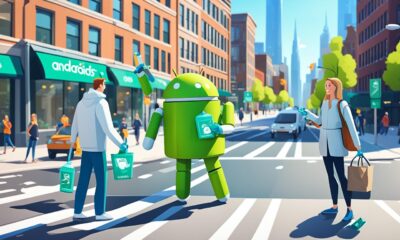
 AGI and AI Impact on Human Relationships3 weeks ago
AGI and AI Impact on Human Relationships3 weeks ago1X Technologies Androids Built to Benefit Society
-

 AGI and AI Impact on Human Relationships2 weeks ago
AGI and AI Impact on Human Relationships2 weeks agoAI’s Influence on Society: Insights & Outlook
-

 AGI and AI Impact on Human Relationships2 weeks ago
AGI and AI Impact on Human Relationships2 weeks agoConsequences of Reaching AGI Unveiled
